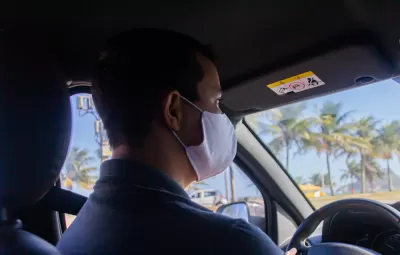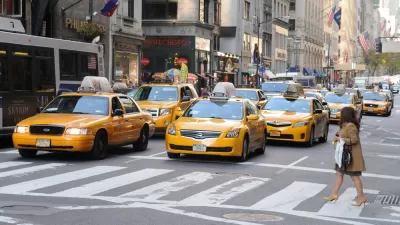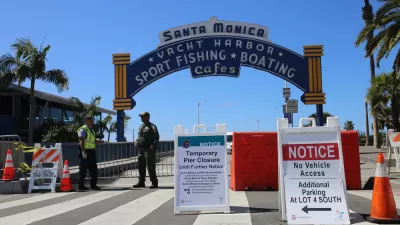While public transit tends to make the most headlines for coronavirus-damaged ridership numbers, ride-hailing companies like Uber and Lyft aren't exactly raking in new customers.

"Analysts say that the ride-hail industry may take months or even years to start to recover, but companies already are seeing ridership vary according to what cities are reopening, recovering or reimposing restrictions," reports Faiz Siddiqui.
The differences in ridership between cities is immense. According to an expert cited in the article, it's like a "tale of 10,000 cities."
"Markets such as Hong Kong and New Zealand, which were hailed as early success stories in fighting the pandemic, exceeded their pre-pandemic ridership," according to Siddiqui's summary of Uber's ridership numbers. "But U.S. ridership has continued to suffer. Uber said gross bookings on rides were down 75 percent in the three months through June."
"Lyft, the other major U.S. ride-hail service, declined to comment on the impact of the pandemic on its business, citing the release of its quarterly earnings report this week. The company has previously said its April ridership was down 75 percent from April 2019," adds Siddiqui.
According to the article, recovery is underway in New York City, but lagging in Los Angeles and San Francisco. The common thread among the disparate ridership reports: where cases are still up and restrictions are still in place, ride-hailing ridership is still down—way down.
FULL STORY: Uber ridership has cratered and no one knows when it’ll come back

Planetizen Federal Action Tracker
A weekly monitor of how Trump’s orders and actions are impacting planners and planning in America.

Map: Where Senate Republicans Want to Sell Your Public Lands
For public land advocates, the Senate Republicans’ proposal to sell millions of acres of public land in the West is “the biggest fight of their careers.”

Restaurant Patios Were a Pandemic Win — Why Were They so Hard to Keep?
Social distancing requirements and changes in travel patterns prompted cities to pilot new uses for street and sidewalk space. Then it got complicated.

California Homeless Arrests, Citations Spike After Ruling
An investigation reveals that anti-homeless actions increased up to 500% after Grants Pass v. Johnson — even in cities claiming no policy change.

Albuquerque Route 66 Motels Become Affordable Housing
A $4 million city fund is incentivizing developers to breathe new life into derelict midcentury motels.

DC Area County Eliminates Bus Fares
Montgomery County joins a growing trend of making transit free.
Urban Design for Planners 1: Software Tools
This six-course series explores essential urban design concepts using open source software and equips planners with the tools they need to participate fully in the urban design process.
Planning for Universal Design
Learn the tools for implementing Universal Design in planning regulations.
Heyer Gruel & Associates PA
JM Goldson LLC
Custer County Colorado
City of Camden Redevelopment Agency
City of Astoria
Transportation Research & Education Center (TREC) at Portland State University
Camden Redevelopment Agency
City of Claremont
Municipality of Princeton (NJ)





























